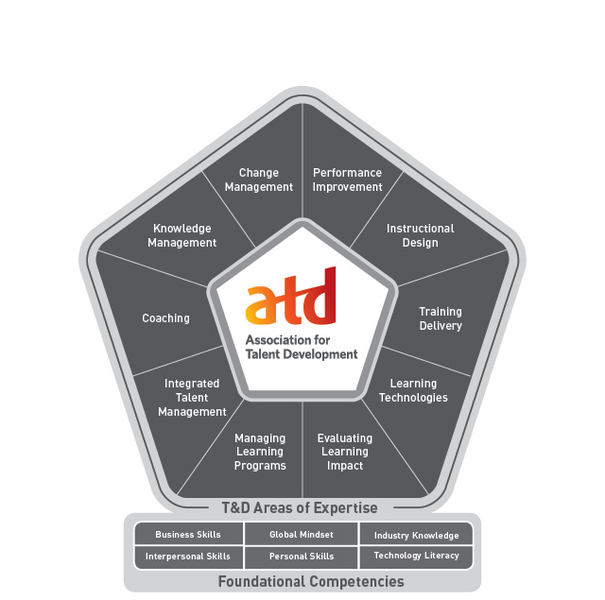Press Release
ASTD Debuts New Competency Model, Redefines Training Excellence
Thu Jan 03 2013

The training and development profession has undergone significant transformation in the last decade, and the skills and knowledge required for trainers to be successful have also evolved. That is why ASTD, the world’s largest association dedicated to the training and development field, has revised The ASTD Competency Model™ and announces its debut in the January 2013 issue of T+D magazine.
“Having an effective training and development function is critical for organizational success,” says Tony Bingham, ASTD’s President and CEO. “We know that the profession has been transformed by four important factors: the recession and economic uncertainty; digital, social, and mobile technology; demographic shifts; and globalization.
“These factors have influenced the competencies and roles required of training and development practitioners. Those who want to maintain their competitive edge need to understand what’s important for success and identify what strengths they need to build to stay relevant,” Bingham concludes.
The 2013 ASTD Competency Model provides two sets of actionable paths. First, it offers a broad inventory of topics that training professionals need to know in today’s rapidly changing business environment. Second, it provides key, specific actions these professionals should take to succeed.
The last major revision of The ASTD Competency Model occurred in 2004. ASTD undertook an extensive research initiative to update The Model for 2013. The full research report that informs The Model’s development, The ASTD Competency Study: Training & Development Redefined, will be published in May.
Key findings and recommendations resulting from the research include:
• staying abreast of new and emerging technology and matching appropriate technology to specific learning needs
• moving to the role of facilitator of learning, content curator, information manager, and builder of learning communities
• designing and presenting learning as a process, instead of a discrete event
• being a business partner by aligning activities to organization strategies and using metrics that are meaningful to business.
Jennifer Naughton, senior director of credentialing for ASTD, says The Competency Model is a roadmap for professional development that should be used by trainers and learning leaders. “Training and development leaders can use The Model as a line of sight to missing or underdeveloped competencies that may be blocking career advancement for the learning staff,” she states, and adds “it gives training and development leaders objective criteria for recruiting, selecting, appraising, and developing their staff.” The Model also serves as a well-researched resource that training and development professionals can use to identify their own skills gaps.
More information about The 2013 ASTD Competency Model, including model-related content, free resources, and tools can be found at www.astd.org/model.
